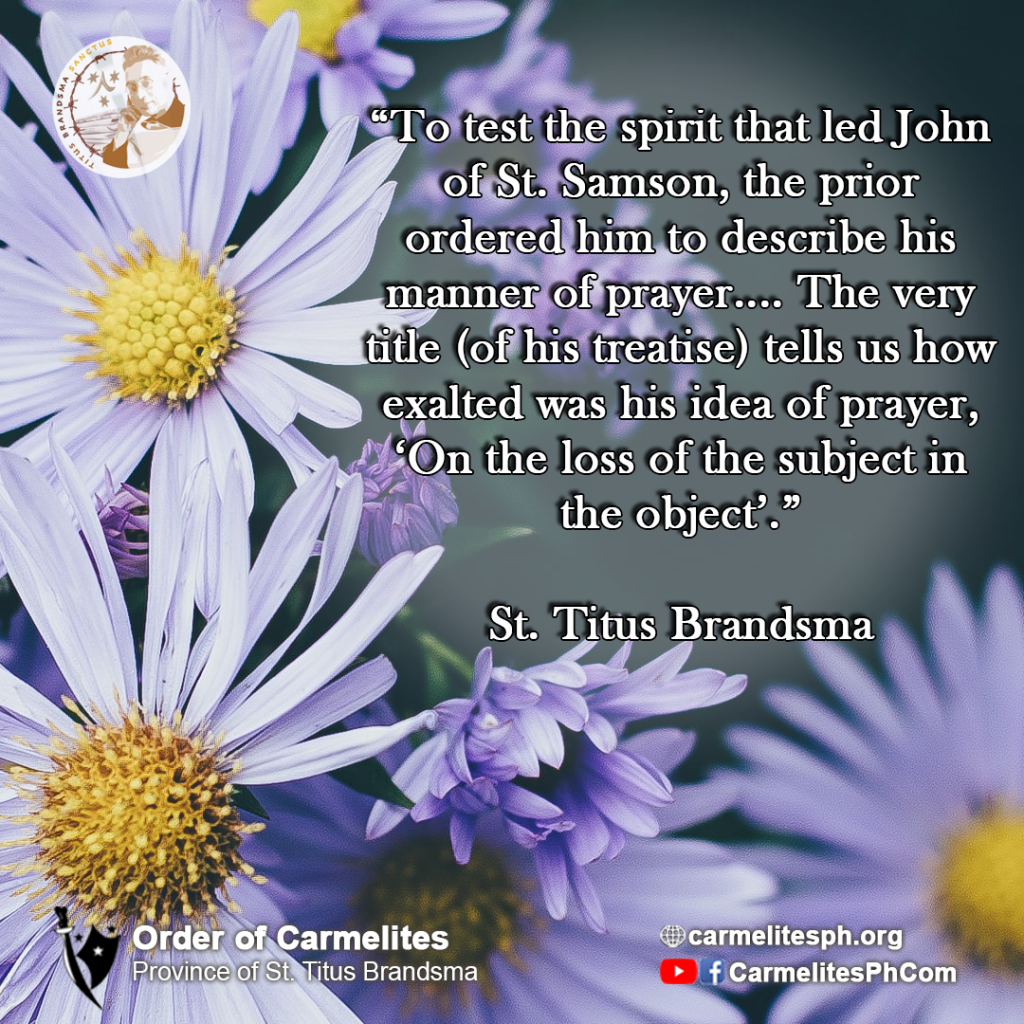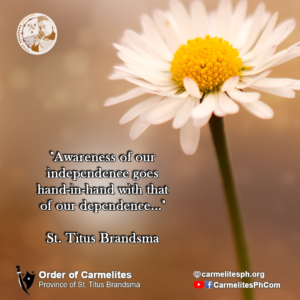
“A Carmelite of the Old Observance, Hieronymus a Matre Dei, who recently edited a selection from the mystic’s works, calls him a témoin autorisé, a weighty exponent of the mysticism of Carmel. Besides, Henry Bremond who dedicates to him some [93] splendid pages of his extensive work, Le Sentiment religieux en France, calls him “un de nos mystiques les plus sublimes”, “one of our most exalted mystics”.
Within certain bounds we may say that he was in this respect the St. John of the Cross of the Old Observance. Perhaps one of the finest works produced by the school of Mount Carmel is one of his numerous writings, a treatise concerning the true spirit of Carmel.
It was indeed a remarkable triumvirate that God had brought together at the beginning of the 17th century in the convent of Rennes in order to infuse a new life into the old Order. It was really Prior Peter Behourth who initiated the reformation, 1604. Later under the name of strictior observantia it spread rapidly. Father Philip ThibauIt, first subprior and afterwards Behourt’s successor as prior of Rennes, gave him his whole-hearted support. But the soul of the movement was actually the blind brother, John of St. Samson, who entered the convent of Rennes in 1612, and died there in 1636.
John of St. Samson or rather Jean du Moulin had been blinded in infancy by an illness. He had grown up in poverty and at length found an asylum in the Carmel of Paris. In return, he often played the organ and grew so skilled that people loved to hear him. He was intensely pious but it never occurred to anyone to admit him into the Order. He was already 35 years old before he confessed his desire to receive the habit of the Order to Father Matthew Pinault, a young father who had finished his studies in Paris and was about to return to the monastery of Dol in Bretagne. He was received at Dol in 1606 and from there arrived in 1612 at Rennes.
Prior Philip Thibault had heard a great deal about the virtuous life and exalted prayer of this lay brother and therefore desired him to be in the center of the new reformation that the love of God and the Order might be increased. Yet Brother Samson was not quite at ease. It was so very unusual that a lay brother should take the lead in spiritual matters. Besides, he was only imperfectly formed and his blindness made it difficult for him to draw information from books. Something had been read to him now and then; but much guidance had not been his, unless God Himself had guided him. To test the spirit that led him, the prior ordered him to describe his manner of prayer. The answer was as sublime as St. Teresa’s to a similar question, written in the book of her life. The very title tells us how exalted was his idea of prayer, “On the loss of the subject in the object” (“Of Absorption”).”
St. Titus Brandsma
What do you think of this quote? Write it on the comment section.
📸 Annie Spratt | Unsplash


